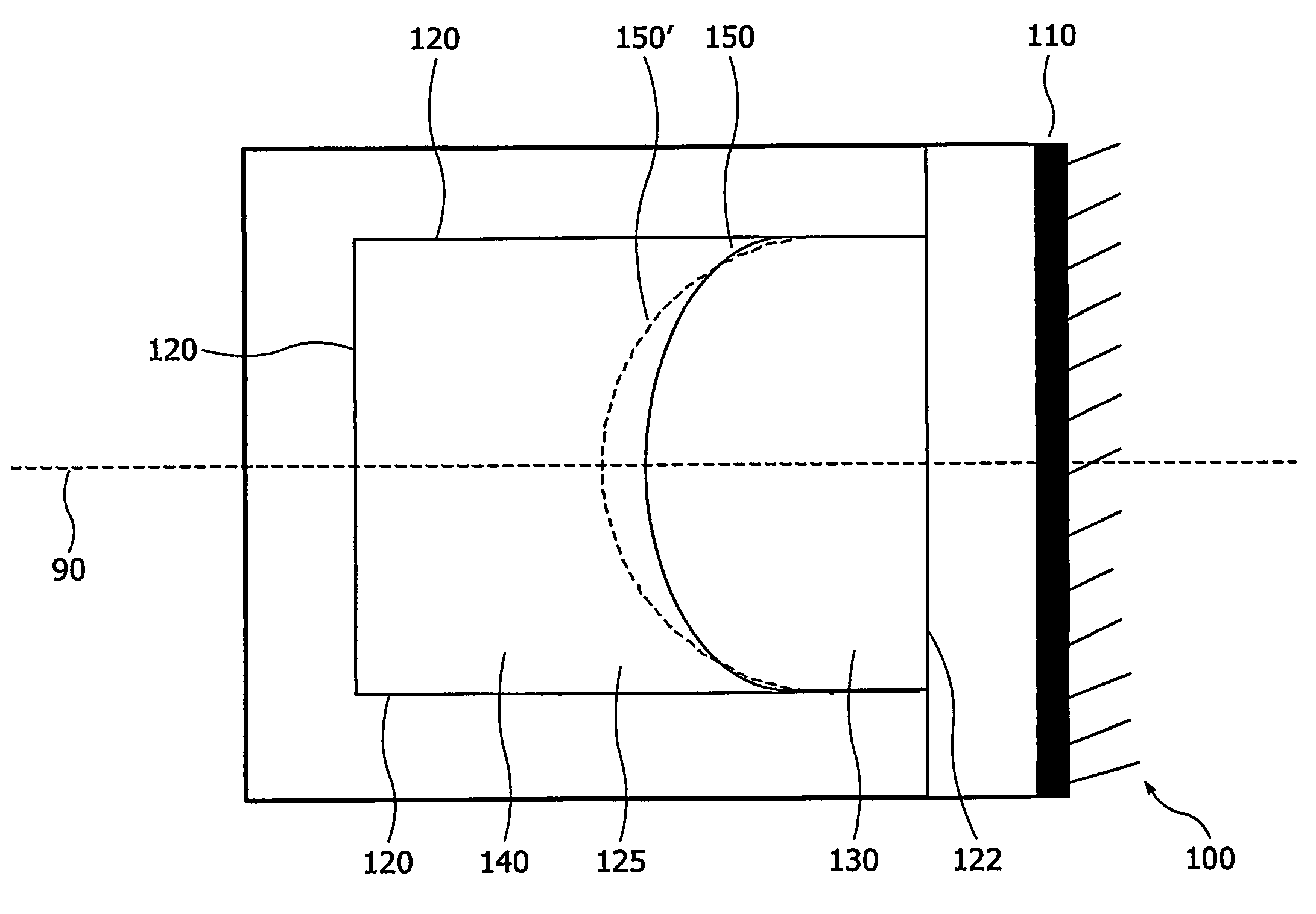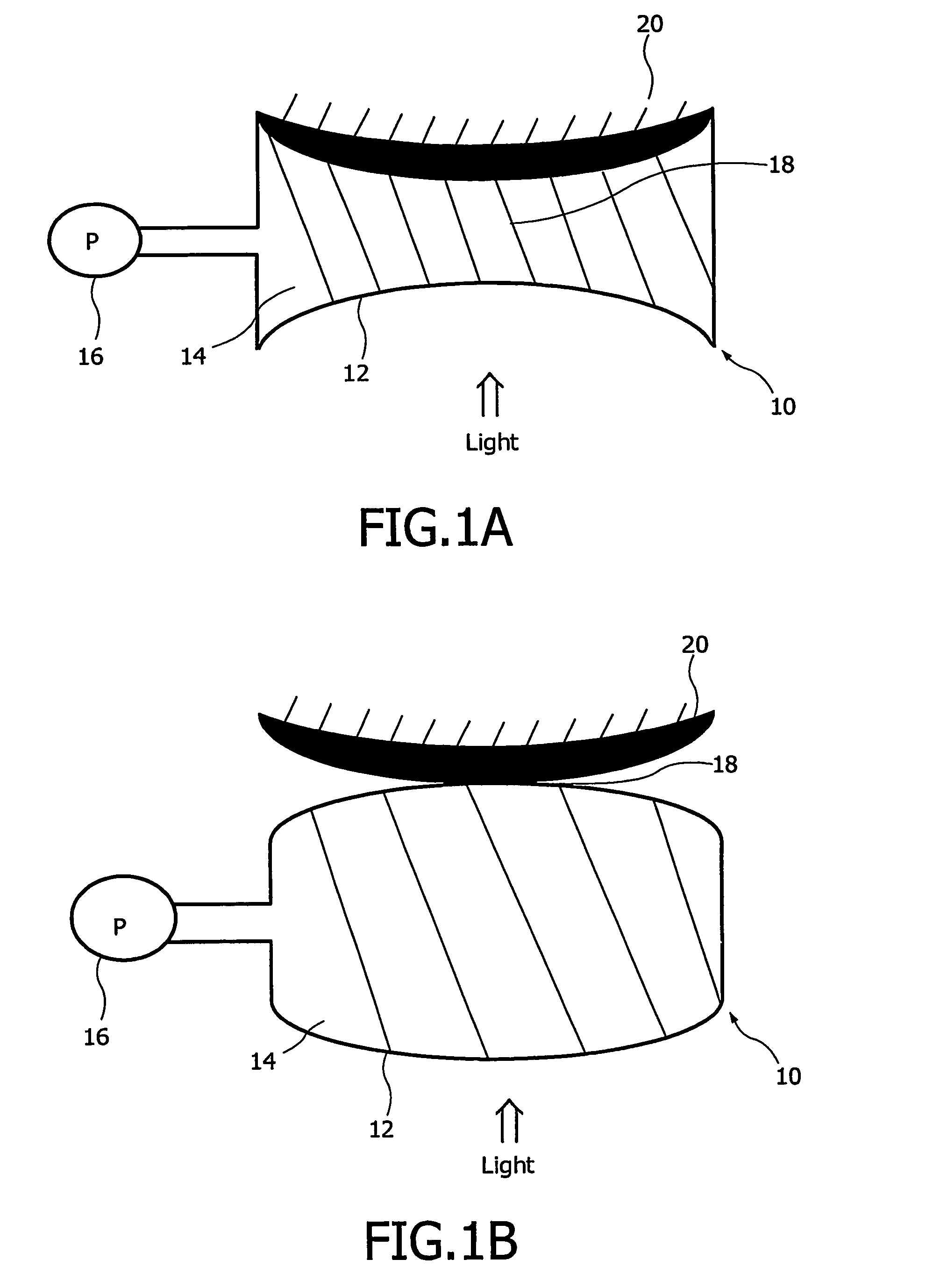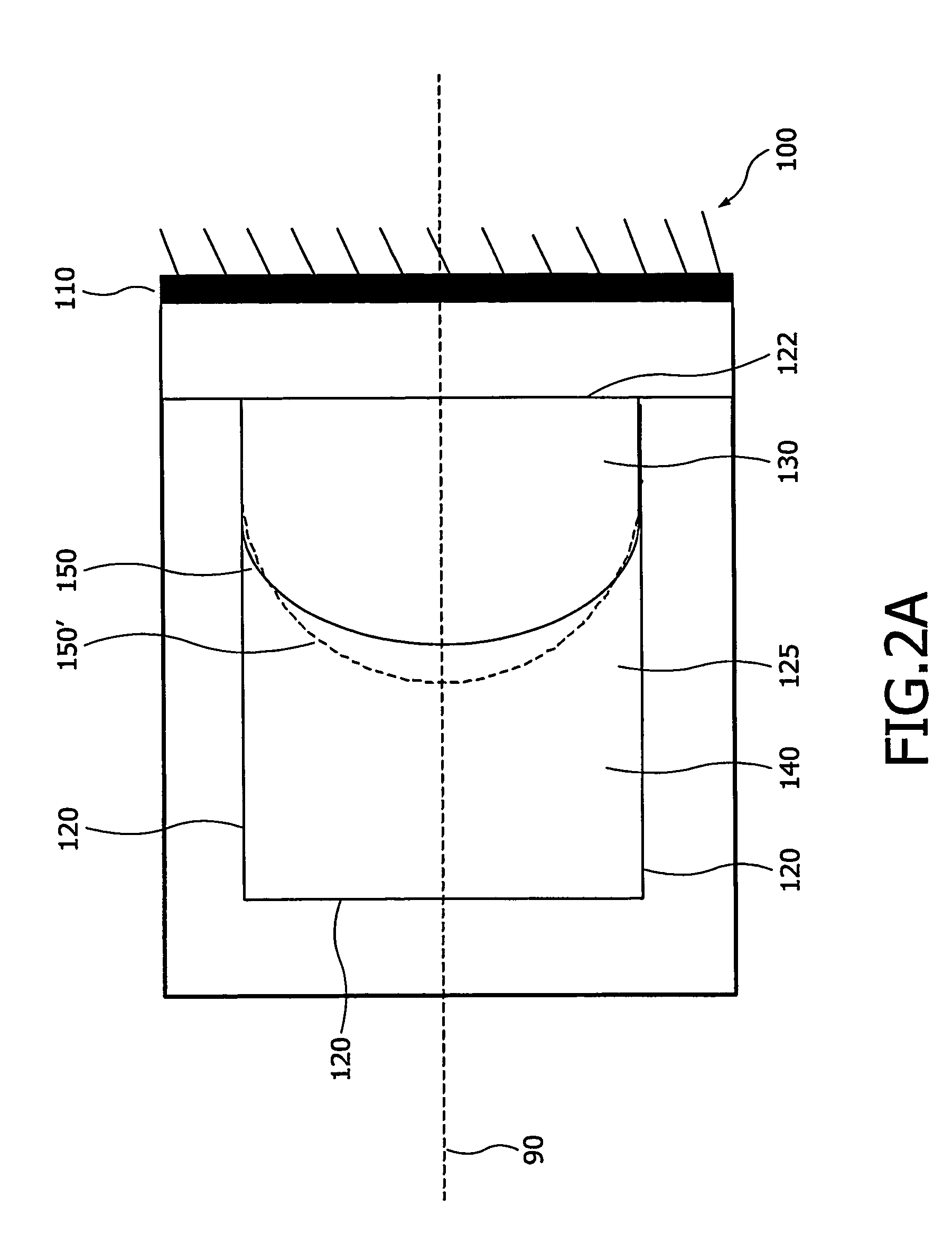Adjustable mirror
a mirror and adjustment technology, applied in the field of adjustable mirrors, can solve the problems of difficult control, deformation of the mirror, and high cost of providing a deformation optical mirror of good optical quality,
- Summary
- Abstract
- Description
- Claims
- Application Information
AI Technical Summary
Benefits of technology
Problems solved by technology
Method used
Image
Examples
first embodiment
[0026]FIG. 2A shows an adjustable mirror 100 in accordance with the present invention. The mirror 100 can be regarded as being formed of two distinct elements: a reflective surface 110 and a variable lens formed of two fluids 130, 140 of different refractive indices.
[0027]A fluid is a substance that alters its shape in response to any force, that tends to flow or to conform to the outline of its chamber, and that includes gases, liquids and mixtures of solids and liquids capable of flow.
[0028]The two fluids are substantially immiscible i.e. the two fluids do not mix. A lens function is thus provided by the meniscus 150 formed along the contact area between he two fluids, as the fluids have different refractive indices. A lens function is the ability of the meniscus 150 to focus (converge or diverge) one or more wavelengths of light.
[0029]The meniscus 150 extends transverse the optical axis 90 of the mirror 100. The term transverse indicates that the meniscus crosses (i.e. it extends...
second embodiment
[0047]FIG. 4A illustrates a cross sectional schematic view of an adjustable mirror 300 in accordance with the present invention. The mirror 300 is generally similar to the mirror 100 illustrated in FIG. 2A, with identical reference numerals being utilized to indicate similar components. In this particular embodiment, the adjustable mirror 300 further comprises a pump 310 connected to the fluid filled chamber 125 and arranged to pump quantities of one or more of the fluids to and from the chamber 125. In this particular example, the pump 310 is arranged to simultaneously increase the volume of the fluid 130 and decrease the volume of the fluid 140 (and vice versa), so as to maintain the same total volume of the two fluids 130, 140 within the chamber 125. The result will be that the meniscus 150 will be moved along the optical axis as fluids are added i.e. if extra fluid 130 is added, then the meniscus may move to position 150″. In this particular embodiment, the shape of the meniscus...
PUM
 Login to View More
Login to View More Abstract
Description
Claims
Application Information
 Login to View More
Login to View More - R&D
- Intellectual Property
- Life Sciences
- Materials
- Tech Scout
- Unparalleled Data Quality
- Higher Quality Content
- 60% Fewer Hallucinations
Browse by: Latest US Patents, China's latest patents, Technical Efficacy Thesaurus, Application Domain, Technology Topic, Popular Technical Reports.
© 2025 PatSnap. All rights reserved.Legal|Privacy policy|Modern Slavery Act Transparency Statement|Sitemap|About US| Contact US: help@patsnap.com



